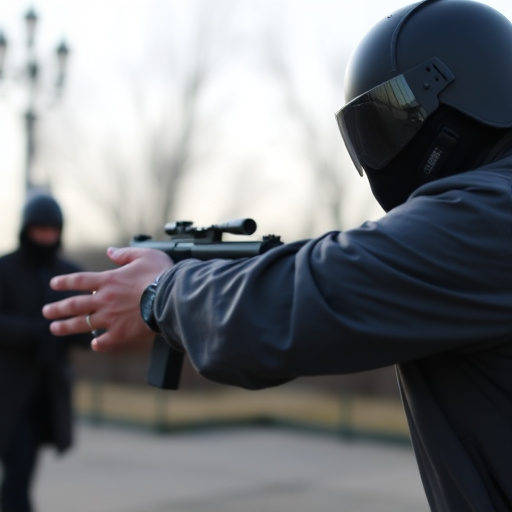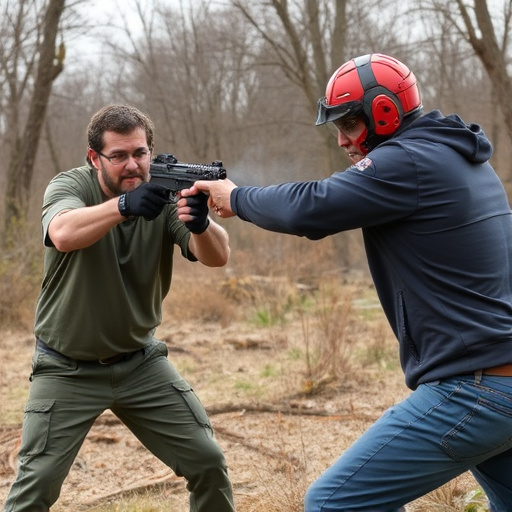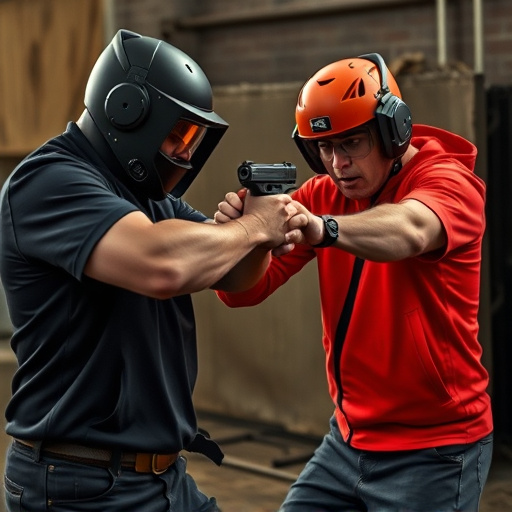In regions with varied local and state laws, understanding compact stun gun regulations is vital for responsible ownership. Purse-sized stun guns are popular for discretion, but secure storage is mandated in many places. Compliance requires knowledge of permits, training, and usage guidelines. With proper training, these stun guns offer practical self-defense, but always consult local law enforcement for accurate information to ensure legal and personal safety while carrying compact stun guns in purses.
“In today’s ever-changing world, personal safety is a top priority. With the rise in awareness of self-defense options, concealed carry stun guns have gained popularity as a compact and effective tool. This article navigates the intricate web of regulations surrounding these devices, especially their purse carry potential. We’ll explore the legal landscape, dissect key features to look for, and understand how compact stun guns can enhance personal safety. Whether you’re a seasoned advocate or new to self-defense, this comprehensive overview will equip you with knowledge on concealed carry stun gun ownership.”
- Understanding Concealed Carry Laws: A Comprehensive Overview
- The Role of Compact Stun Guns in Personal Safety
- Legal Considerations for Purse Carry and Stun Gun Ownership
- Choosing the Right Stun Gun: Features and Regulations to Look Out For
Understanding Concealed Carry Laws: A Comprehensive Overview

In many regions, concealed carry regulations vary greatly depending on local and state laws. When it comes to self-defense tools like compact stun guns, understanding these laws is paramount for responsible ownership. One crucial consideration is whether your area permits the concealed carrying of stun devices and under what circumstances. Some jurisdictions allow only licensed individuals to carry stun guns while others have more lenient restrictions. Additionally, specific rules about the type and size of stun device permissible are often in place; compact stun guns designed for purse or clutch carry may be a preferred option due to their discreet nature.
Further, knowledge of storage requirements and usage guidelines is essential. Many places mandate secure storage of stun guns, especially when not in use, to prevent unauthorized access. Understanding the legal implications of carrying a stun gun, including any required permits or training certifications, can help ensure compliance with local laws. With compact stun guns for purse carry gaining popularity, being informed about these regulations is vital for personal safety and legal integrity.
The Role of Compact Stun Guns in Personal Safety

Compact stun guns have become increasingly popular as personal safety devices, especially among women who may feel more secure carrying a non-lethal weapon in their purse or pocket. Their small size and lightweight design make them easily concealable, allowing individuals to protect themselves discreetly. These stun guns pack a powerful punch, delivering an electric shock that can incapacitate an attacker, giving the user valuable time to escape.
For those seeking effective self-defense options, compact stun guns offer a practical solution. Their convenience and ease of use make them an attractive choice for everyday carry, ensuring peace of mind. With proper training and familiarity, individuals can respond quickly in potentially dangerous situations, demonstrating that being prepared is key to personal safety.
Legal Considerations for Purse Carry and Stun Gun Ownership

When it comes to legal considerations for purse carry and stun gun ownership, understanding the specific regulations in your area is paramount. Many states have different rules regarding concealed carry permits, including provisions for non-firearm self-defense tools like compact stun guns designed for purse carry. These regulations often involve background checks, waiting periods, and training requirements to ensure responsible ownership.
One key aspect to consider is the legal classification of stun guns in your jurisdiction. Some states may have specific laws governing stun gun ownership and use, distinct from traditional firearms. Additionally, certain areas might allow purse carry of compact stun guns under specific conditions, such as when a concealed carry permit is held or when meeting size and voltage restrictions. Always consult local law enforcement or legal professionals for the most accurate information regarding these regulations to ensure compliance and personal safety.
Choosing the Right Stun Gun: Features and Regulations to Look Out For

When choosing a stun gun, especially one suitable for purse carry, compact size and weight are key features to consider. These ensure discreteness, making it easier to keep on your person without drawing unnecessary attention. Look for models that fit comfortably in your hand or can easily slip into a small pouch or pocket. Their smaller dimensions don’t compromise power; many compact stun guns pack a significant punch, delivering powerful jolts that can immobilize an assailant.
Regulations vary widely regarding concealed carry, including specific rules for stun guns. Always check local and state laws before purchasing one. Some areas have strict limitations on the type of stun device allowed or require permits for concealed carry. Ensure the stun gun you select complies with these regulations, particularly if you plan to travel with it. Features like a simple activation mechanism and bright LED flashlights are beneficial, as they facilitate quick deployment in emergencies.
In navigating the complex landscape of concealed carry regulations, especially regarding compact stun guns for purse carry, understanding both personal safety needs and legal constraints is paramount. As highlighted in this article, staying informed about local laws, choosing the right device, and adhering to ownership guidelines are essential steps towards enhancing your security without compromising compliance. Compact stun guns offer a convenient and effective solution for self-defense, but their possession must be balanced with responsible awareness of regulations to ensure a safe and legal experience.
